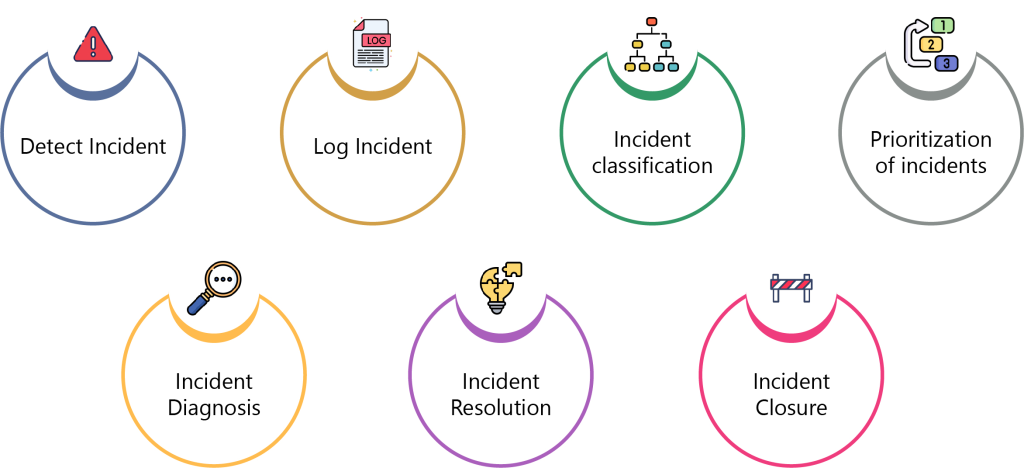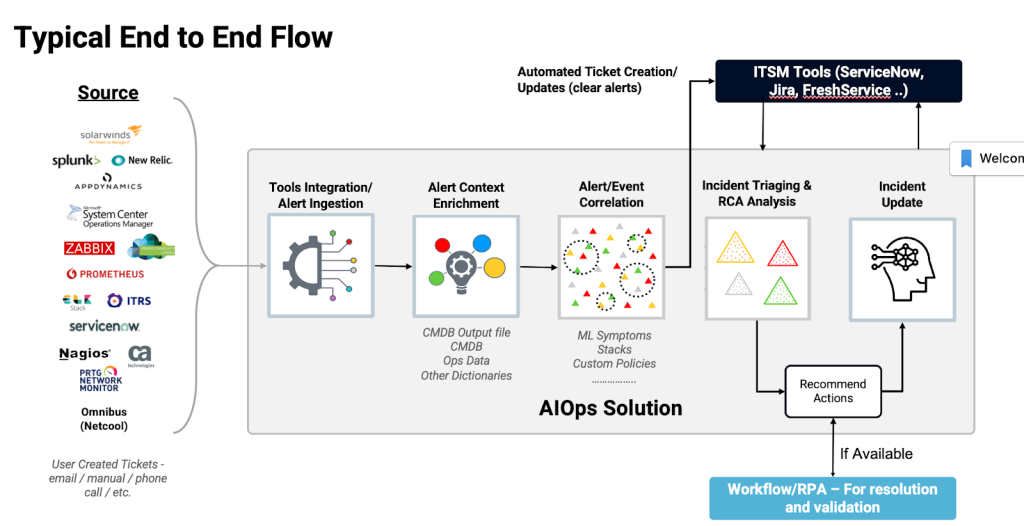Upgrade & Secure Your Future with DevOps, SRE, DevSecOps, MLOps!
We spend hours scrolling social media and waste money on things we forget, but won’t spend 30 minutes a day earning certifications that can change our lives.
Master in DevOps, SRE, DevSecOps & MLOps by DevOps School!
Learn from Guru Rajesh Kumar and double your salary in just one year.

Incident management is an essential aspect of any organization. It involves identifying, analyzing, and resolving incidents that affect the normal functioning of an organization. AIOps, or Artificial Intelligence for IT Operations, is an emerging technology that can revolutionize incident management by using machine learning algorithms and artificial intelligence.
What is AIOps?
AIOps is an approach to IT operations that combines big data, machine learning, and artificial intelligence to automate and improve IT operations. It involves the use of advanced analytics and algorithms to identify patterns and anomalies in data, which can help IT teams predict and prevent issues before they occur.
The Benefits of Using AIOps for Incident Management
The use of AIOps for incident management can provide several benefits, including:

Real-time monitoring
AIOps can provide real-time monitoring of IT systems, which can help identify and resolve issues before they cause significant damage.
Faster resolution times
AIOps can automate the identification and resolution of incidents, reducing the time it takes to resolve them. This can help minimize the impact on business operations and improve customer satisfaction.
Improved accuracy
AIOps can analyze large volumes of data and identify patterns and anomalies that humans may miss. This can help improve the accuracy of incident management and reduce the risk of false positives.
Cost savings
By automating incident management, AIOps can reduce the need for manual intervention, which can help reduce costs associated with IT operations.
How to Implement AIOps for Incident Management
Implementing AIOps for incident management requires a structured approach. Here are some steps you can take to implement AIOps for incident management:

Step 1: Define the problem
The first step in implementing AIOps for incident management is to define the problem you want to solve. This could be a specific incident that occurs frequently or a broader issue affecting the IT operations of your organization.
Step 2: Collect data
The next step is to collect data related to the problem you want to solve. This could include logs, metrics, and other data sources that can help you identify patterns and anomalies.
Step 3: Train the model
Once you have collected the data, you need to train the AIOps model to identify patterns and anomalies related to the problem you want to solve. This involves using machine learning algorithms to analyze the data and identify patterns that can help predict and prevent incidents.
Step 4: Implement the model
Once the model has been trained, it can be implemented into your incident management process. This could involve integrating the model with your existing incident management tools or creating a new incident management process that incorporates the AIOps model.
Step 5: Monitor and refine
Finally, you need to monitor the performance of the AIOps model and refine it as necessary. This involves analyzing the data and making adjustments to the model to improve its accuracy and effectiveness.
Conclusion
AIOps is an emerging technology that can revolutionize incident management by using machine learning algorithms and artificial intelligence. By implementing AIOps for incident management, organizations can benefit from real-time monitoring, faster resolution times, improved accuracy, and cost savings. To implement AIOps for incident management, organizations need to define the problem, collect data, train the model, implement the model, and monitor and refine it as necessary.

Leave a Reply